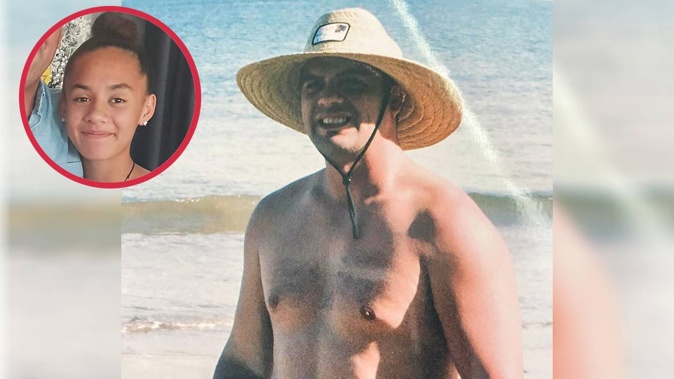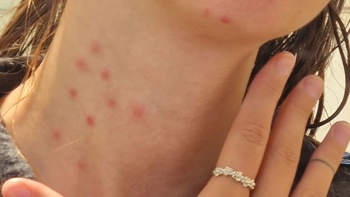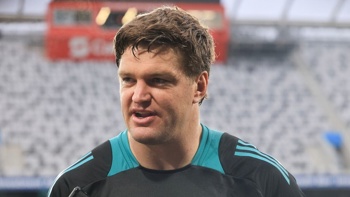
A Tauranga father who drowned trying to save his daughter swimming in Mount Maunganui may still be alive if a flotation device was available, a coroner and his whānau say.
Reon Wikeepa, a 43-year-old machine operator, died on November 12 after he jumped into the water at Moturiki (Leisure Island) to help his daughter who was having trouble getting out of the water.
Now the coroner has recommended Tauranga City Council “urgently” place public rescue equipment and signage on the island - a task the council aimed to finish by the end of the month.
Wikeepa’s sister, Nikki Tuhakaraina, said their whānau had “no doubt” it would have been a “very different story” if a flotation device was available.
“To see that there will be flotation devices near where my brother drowned as well as other locations along our coastline makes us extremely happy,” she said.
“His death has made, and will continue to make, a big difference in the lives of others who may get into difficulty in the future.”
In his report released today, Coroner Ian Telford concluded Wikeepa’s cause of death was accidental drowning.
However, Telford considered it “likely” that Wikeepa would have had a “greater chance of survival” if those attempting to rescue him had ready access to a flotation device.
According to the report, Wikeepa and his daughter decided to jump off the rocks at the end of Moturiki Island near a blowhole - a “popular spot” for rock jumping about 10 metres above the water.
There were several hazards at the island that day, including 1m to 1.6m waves, “medium-period” swell and “strong boundary currents”.
At around 1pm, she jumped in the water but had difficulty getting out on to the rocks. She yelled out to her father for help, who jumped in and held her until she was able to climb up.
Wikeepa started getting washed back out by the waves, which kept washing over his head. Eventually, he went under.
Wikeepa’s son jumped in to help but experienced similar difficulties. His son survived but Wikeepa did not.
Surf life savers were notified at 1.45pm and lifeguards ran to the scene.
At 1.50pm, the lifeguards radioed for help and a boat arrived within about five minutes. They retrieved Wikeepa from the water and immediately started resuscitation in the boat.
Wikeepa was on the shore by 2pm and the resuscitation attempt continued until ambulance paramedics arrived at 2.19pm and took over.
Despite “extensive resuscitation attempts”, a paramedic formally certified Wikeepa’s death at 2.45pm.
The coroner said Surf Life Saving NZ reported there had been 19 beach and coastal drownings in Tauranga since July 2012, two of these at Moturiki Island.
The coroner’s report said there were no water safety signs adhering to the Australian/New Zealand standard for water safety signage, or public rescue equipment, within the Mount Maunganui Beach and Moturiki Island coastal zone.
After consulting with Surf Life Saving New Zealand, the coroner recommended Tauranga City Council “urgently” place appropriate public rescue equipment on Moturiki and coastal surrounds, and install appropriate signage complying with the Australian/New Zealand standard.
The report said Tauranga City Council had already taken action on the recommendations and was in the process of establishing one warning sign and three sets of public rescue equipment on Moturiki Island. One of the proposed sites for equipment was near where Wikeepa drowned.
The coroner also recommended the council and Surf Life Saving NZ work collaboratively to undertake a coastal risk assessment for the city and agree on an implementation plan, which would identify locations where signage and rescue equipment would be beneficial to public safety.
The coroner urged other councils to take note of the partnership and consider how they might adopt a similar approach.
“It is beyond obvious that the risks discussed in these findings are not restricted to the Tauranga district; our narrow Land of the Long White Cloud is, after all, surrounded by water.”
In a statement to the Bay of Plenty Times, Wikeepa’s sister said his death had been a “huge loss” to their whānau.
“When we read the coroner’s report, we [were] immediately transported back to that dreadful day,” Tuhakaraina said.
“It was upsetting to remember what his children and nephews had to go through and witness, and the heartache we all felt.”
Tuhakaraina said their whānau was “so happy” to hear the recommendations by the coroner and Surf Life Saving NZ were accepted by the council.
“We have no doubt that if a flotation device was available, it would’ve been a very different story.”
Tauranga City Council community services general manager Barbara Dempsey said it had worked with local hapū, Surf Life Saving NZ and Heritage New Zealand to determine the right locations for the sign and flotation devices on Moturiki Island.
“We are on track to have signage and flotation devices in place before the end of June.”
Dempsey said the council had committed to working with Surf Life Saving NZ to develop a coastal risk assessment for the other areas along the coast and the parties would meet in the near future.
Surf Life Saving NZ eastern region lifesaving manager Chaz Gibbons-Campbell. Photo / Mead Norton
Surf Life Saving NZ eastern region lifesaving manager Chaz Gibbons-Campbell said when someone jumped in the water to save someone else, the chances of them both getting out were “greatly improved” if a flotation device was available.
“We see that with surfers all the time.”
Gibbons-Campbell said it had trialled different types of public rescue equipment with members of the public in Mount Maunganui including life rings, rescue tubes and a “pink throw buoy”. He understood life rings were best suited for Moturiki Island.
“It was really good to be able to see what Joe Bloggs can use and what they found easier to use.”
He said it had been doing a coastal risk assessment with surf clubs in the Bay of Plenty, looking at beach users, potential hazards, where its lifeguard services were and where it saw the need for services.
The assessment would be produced in June or July.
Take your Radio, Podcasts and Music with you

/cloudfront-ap-southeast-2.images.arcpublishing.com/nzme/6W6PNXFMK5FLHIXQDPHBAFYZBA.JPG)








